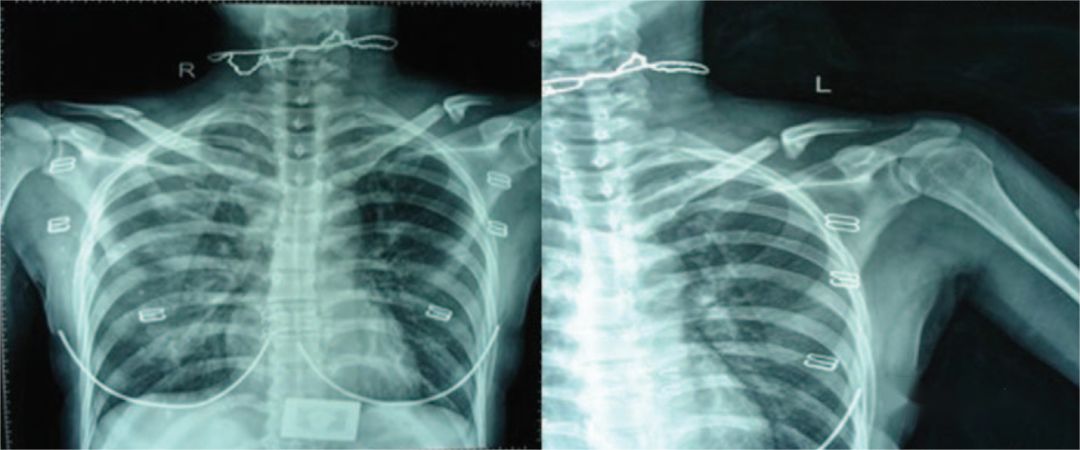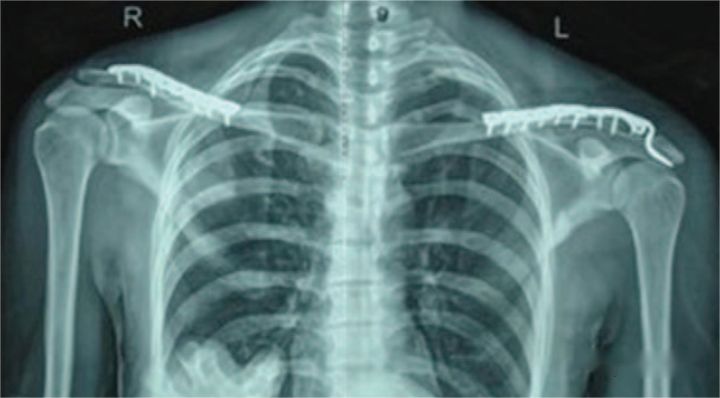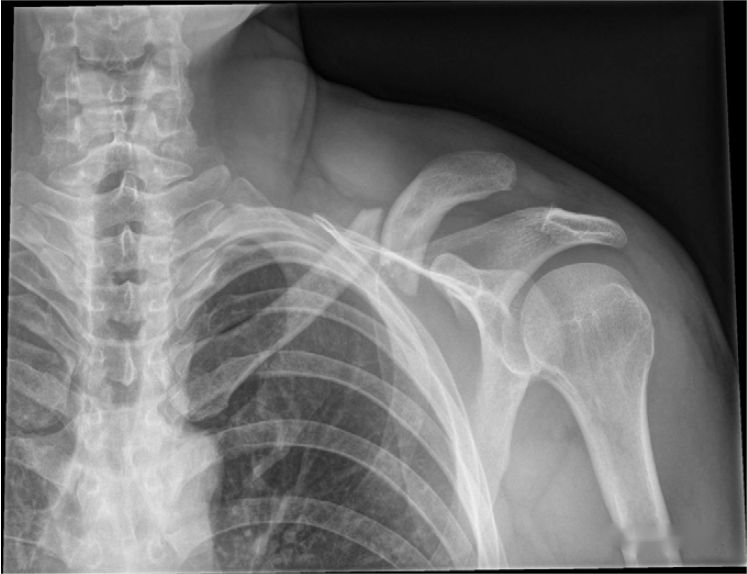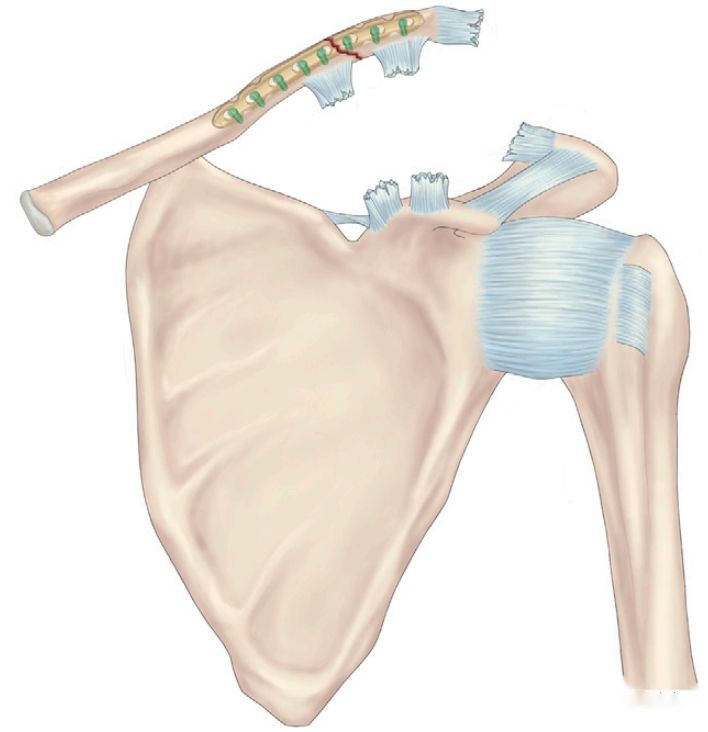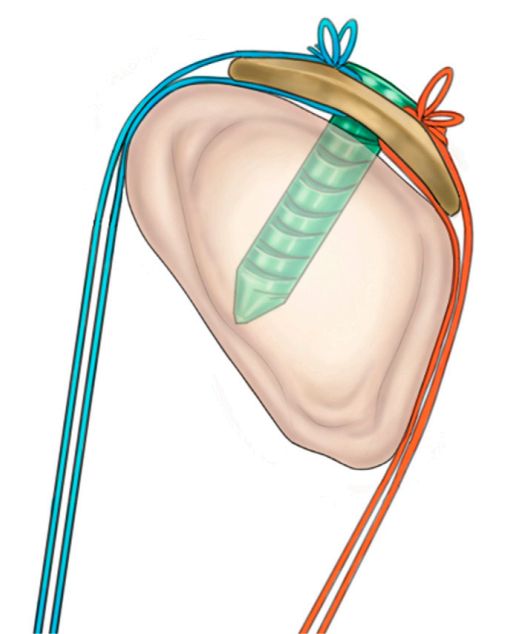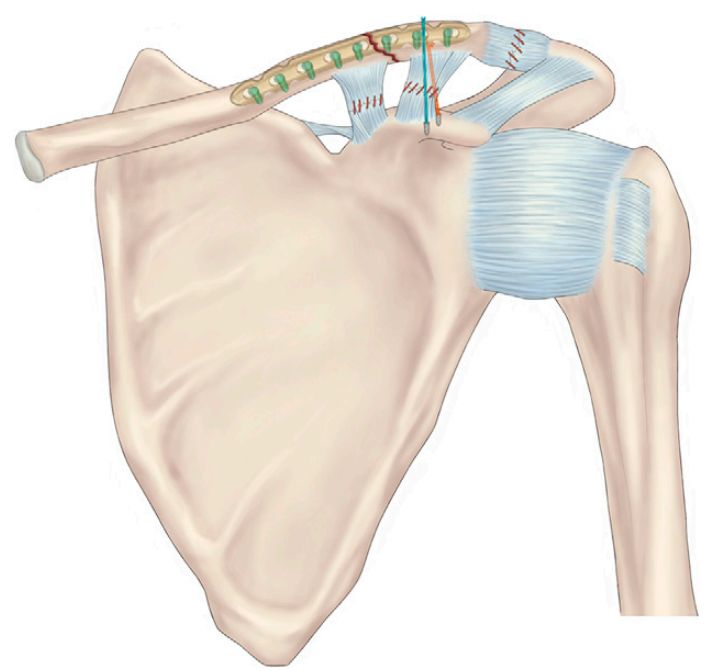Fracture of the clavicle combined with ipsilateral acromioclavicular dislocation is a relatively rare injury in clinical practice. After the injury, the distal fragment of the clavicle is relatively mobile, and the associated acromioclavicular dislocation may not show obvious displacement, making it susceptible to misdiagnosis.
For this type of injury, there are typically several surgical approaches, including a long hook plate, a combination of a clavicle plate and a hook plate, and a clavicle plate combined with screw fixation to the coracoid process. However, hook plates tend to be relatively short in overall length, which can lead to inadequate fixation at the proximal end. The combination of a clavicle plate and a hook plate may result in stress concentration at the junction, increasing the risk of refracture.
Fracture of the left clavicle combined with ipsilateral acromioclavicular dislocation, stabilized using a combination of a hook plate and a clavicle plate.
In response to this, some scholars have proposed a method of using a combination of a clavicle plate and anchor screws for fixation. An example is illustrated in the following image, depicting a patient with a midshaft clavicle fracture combined with ipsilateral type IV acromioclavicular joint dislocation:
First, a clavicular anatomical plate is used to fix the clavicle fracture. After reducing the dislocated acromioclavicular joint, two metal anchor screws are inserted into the coracoid process. The sutures attached to the anchor screws are then threaded through the screw holes of the clavicle plate, and knots are tied to secure them in front and behind the clavicle. Finally, the acromioclavicular and coracoclavicular ligaments are directly sutured using the sutures.
Isolated clavicle fractures or isolated acromioclavicular dislocations are very common injuries in clinical practice. Clavicle fractures account for 2.6%-4% of all fractures, while acromioclavicular dislocations make up 12%-35% of scapular injuries. However, the combination of both injuries is relatively rare. Most of the existing literature consists of case reports. The use of the TightRope system in conjunction with a clavicle plate fixation might be a novel approach, but the placement of the clavicle plate can potentially interfere with the placement of the TightRope graft, posing a challenge that needs to be addressed.
Furthermore, in cases where the combined injuries cannot be assessed preoperatively, it is recommended to routinely assess the stability of the acromioclavicular joint during the evaluation of clavicle fractures. This approach helps prevent overlooking concurrent dislocation injuries.
Post time: Aug-17-2023





